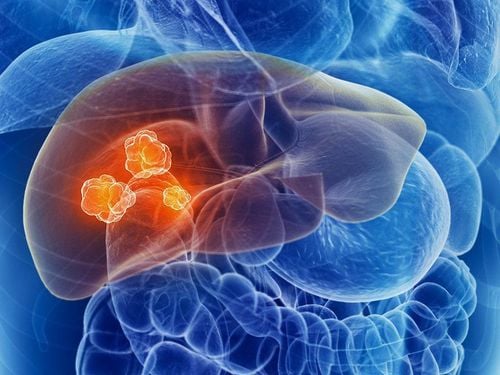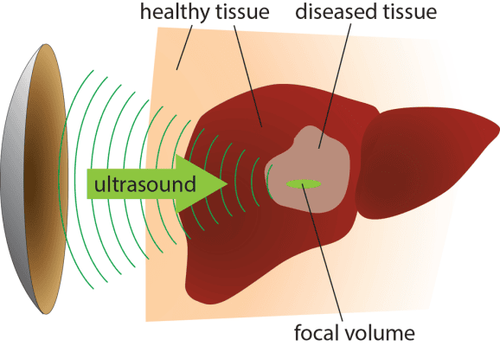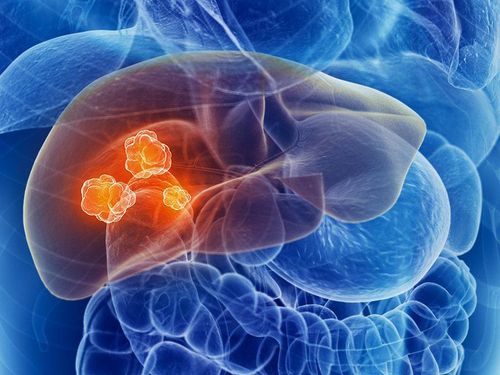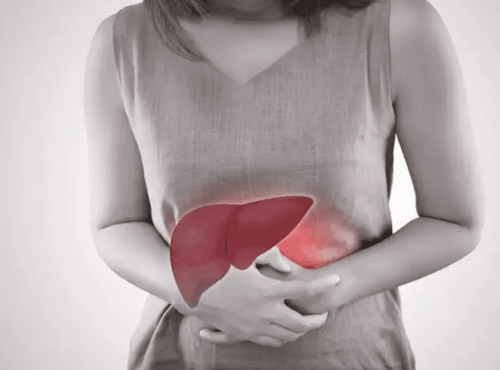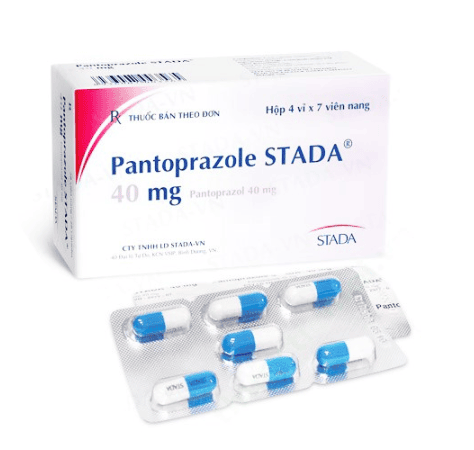This is an automatically translated article.
The article was professionally consulted with Specialist Doctor I Tran Quoc Vinh - Emergency Doctor - Department of Resuscitation - Emergency - Vinmec Nha Trang International General Hospital.Liver abscess is a rare but dangerous condition, the disease can be caused by many causes such as bacteria, fungi, amoeba. If liver abscess is not treated early and promptly, it will lead to many complications and increase the risk of death.
1. What is a liver abscess?
Liver abscess is a condition in which pus forms inside the liver parenchyma, which can be caused by many causes such as amoeba, bacteria or fungi. Intrahepatic abscesses can be single or multiple, large or small and can be in any location, but most are in the right lobe of the liver.2. Is liver abscess dangerous?, the cause of the disease
"Is liver abscess dangerous?". In fact, liver abscess is a dangerous disease. Symptoms of the disease do not appear immediately, but when they appear, they will take place massively with very severe manifestations. The causes leading to liver abscess include:Due to amoeba: In developing countries, this is the main cause of liver abscess, through the wound in the colon mucosa into the venous blood, to the venous blood. portal vein and liver disease. Amebic liver abscesses are common in men between the ages of 20 and 50. Bacterial: Developed countries have the highest rate, but in our country, this is not the main cause. However, this is a dangerous cause leading to serious complications and high mortality rate. Bacteria follow the foci of infection in the abdomen causing secondary liver abscess, usually in people with weakened resistance, elderly, diabetic ... Sometimes liver abscess is also caused by fungi. , which accounts for a lower percentage.

3. How to diagnose liver abscess?
The diagnosis of liver abscess should be based on clinical and laboratory factors.3.1 Clinical signs of amoebic liver abscess Often signs of liver abscess are not clear to distinguish from other causes, the course of which may vary from case to case and from cause to cause. May meet with the following manifestations:
Pain in the liver (right lower quadrant) is a prominent sign of liver abscess, encountered in most cases. Fever: Usually occurs quite suddenly with high fever and may be accompanied by chills with a temperature of 39 - 400C. Sometimes atypical cases may not present with fever or low-grade fever. Digestive disorders: Vomiting and nausea, loss of appetite, weight loss. These symptoms account for a high proportion in liver abscess. Shortness of breath due to irritation of the abscess into the diaphragm. Jaundice may occur. Especially in the case of bacterial infections, most of the time jaundice, while amoeba is rarely seen. When palpating the liver, an abnormal mass of the liver can be seen. 3.2 Subclinical signs Blood tests: Leukopenia, mild isochromic anemia, increased erythrocyte sedimentation rate. Blood biochemistry: Abnormal liver function such as increased ALP, ALT, AST, decreased albumin, increased bilirubin. Blood culture: Most likely positive for bacterial infection. Cases of suspected amoebic infection: The stool test for antigens of E.histolytica is a test with high sensitivity and specificity and the test for amoeba antigens in serum by the Elisa technique. Straight chest x-ray: Up to half of people experience abnormalities on the x-ray. The right diaphragm is elevated, and there may be right-sided atelectasis or pleural effusion. Liver Abscess on Abdominal Ultrasound: Seeing an abscess, percutaneous aspiration and drainage may be allowed under ultrasound guidance. On ultrasound, the abscess has a clear border, and the inside is hypoechoic. Abdominal CT scan: This is a very sensitive method to help detect abscesses in cases of unknown or suspected ultrasound, allowing aspiration and drainage. It also helps detect other abscesses in the abdomen or other diseases. CT scans can also help detect small abscesses that are difficult to detect on conventional ultrasound. Abscess aspiration: Usually performed under the guidance of ultrasound or CT scanner. This is a measure used to diagnose and treat disease. The accurate diagnosis of liver abscess is made by subclinical measures, not only that, it is important to diagnose the cause of the disease, thereby helping to treat accurately and have a better prognosis.
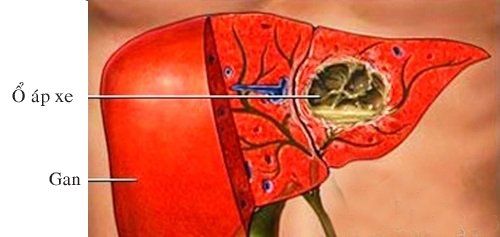
4. Liver abscess why should it be treated as soon as possible?
Liver abscess is a dangerous disease that can cause many complications, so as soon as it is diagnosed, it should be treated immediately. If not treated early and properly, the risk of death is high due to the late arrival of the patient.4.1 Complications from ruptured abscess Complications from ruptured abscess: Due to late treatment, the abscess develops and causes rupture.
Rupture into the lungs and pleura: Due to the abscess at the top of the right liver, causing a perforation of the diaphragm and a rupture directly into the lung, causing emphysema or spitting up pus. Pleural infection, pleural effusion. Pericardial rupture: Causes symptoms similar to heart failure or acute cardiac tamponade which is very dangerous, if not timely intervention can cause rapid death due to acute cardiac tamponade. Intra-abdominal rupture causing generalized peritonitis: This complication is quite common causing toxic septic shock, if not promptly intervened, the patient may die due to septic shock. The stomach causes vomiting pus, blood, into the colon causing pus and prolonged blood. Rupture into the abdominal wall causing leakage of pus out of the abdominal wall: This is less common. 4.2 Complications from prolonged pus-filled abscess and superinfection are now less common, because diagnostic facilities allow detection of liver abscesses at a very early stage. But if it happens, it will be very dangerous, often in people who are treated late, so it is necessary to examine and treat early.
Thus, early detection and diagnosis thanks to subclinical tests are very important to help patients get treatment as soon as possible. Because late treatment increases the risk of death for the patient.
=>> Advice from Specialist I Tran Quoc Vinh - Emergency Doctor - Department of Resuscitation - Emergency - Vinmec Nha Trang International General Hospital : When having abdominal pain in the right lower quadrant, especially is accompanied by symptoms such as: yellow skin, yellow eyes, fever, loss of appetite.. need to go to the hospital to check us immediately. The late detection and treatment, the risk of death will be very high because the disease has many dangerous complications.
Please dial HOTLINE for more information or register for an appointment HERE. Download MyVinmec app to make appointments faster and to manage your bookings easily.





